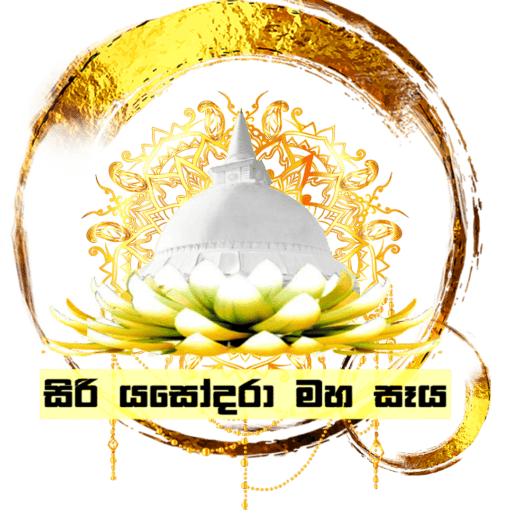Khemā Therī
Her Past Aspiration
During the time of Buddha Padumuttara, Khemā Therī was born into a wealthy family in the city of Haṃavatī, a hundred thousand world-cycles ago. One day, she listened to the Buddha’s sermon and became a devotee of the Buddha, being established in the Three Refuges.
Then she had her parents approval to offer an extraordinary feast to the Buddha and His Sangha. At the end of seven days of the great offering, she saw Sujātā Therī whom the Buddha named as the foremost bhikkhunī in Knowledge. She was inspired by that. She gave an extraordinary offering again before expressing her wish to become such a foremost bhikkhunī in her own time later. Buddha Padumuttara prophesied that a hundred thousand world-cycles hence she would become the foremost bhikkhunī with regards to Knowledge in the time of Buddha Gotama.
Repeated Existences as Deva Queen or Human Queen
On passing away from that existence, she was reborn in five deva realms, namely, Tāvatiṃsa, Yāmā, Tusitā, Nimmānarati, and Paranimmitavasavatī successively, as queen of the devas. When she passed away from there, she was reborn as queen of the Universal Monarch or as queen of a great king Thus, wherever she was reborn, she was born as queen. She enjoyed the most glorious state in the deva-world and the human world for many many world-cycles.

-
Save
Existence as A Bhikkhunī leading A Life of Purity
After being reborn in the fortunate existences only, during the time of Buddha Vipassī, ninety-one world-cycles previous to the present world-cycle, she was reborn into a wealthy family. She had the opportunity of hearing the Buddha’s Dhamma which made her solely devoted to the Pure Life and she became a bhikkhunī who was learned in the Doctrine, skillful in the knowledge of Paṭiccasamuppāda, a bold exponent of the Four Ariya Truths, and a persuasive preacher besides being a diligent one in the practice of the Dhamma. Thus she was a model to those who took up the Threefold Training under the Buddha’s Teaching. She spent this life of Purity during her life span of ten thousand years.
Passing away from there, she was reborn in Tusitā Deva realm. After that, wherever she was reborn, the great merit, which she acquired in her existence during time of Buddha Vipassī, endowed her with the best that that particular existence could offer, such as making her talented, pure in morality, rich in resources attended by wise following, well provided with ease and comfort. Further, the religious practices observed in that existence led her to superior social status such as making her a queen, whether in deva existence or human existence and being loved and respected by her king.
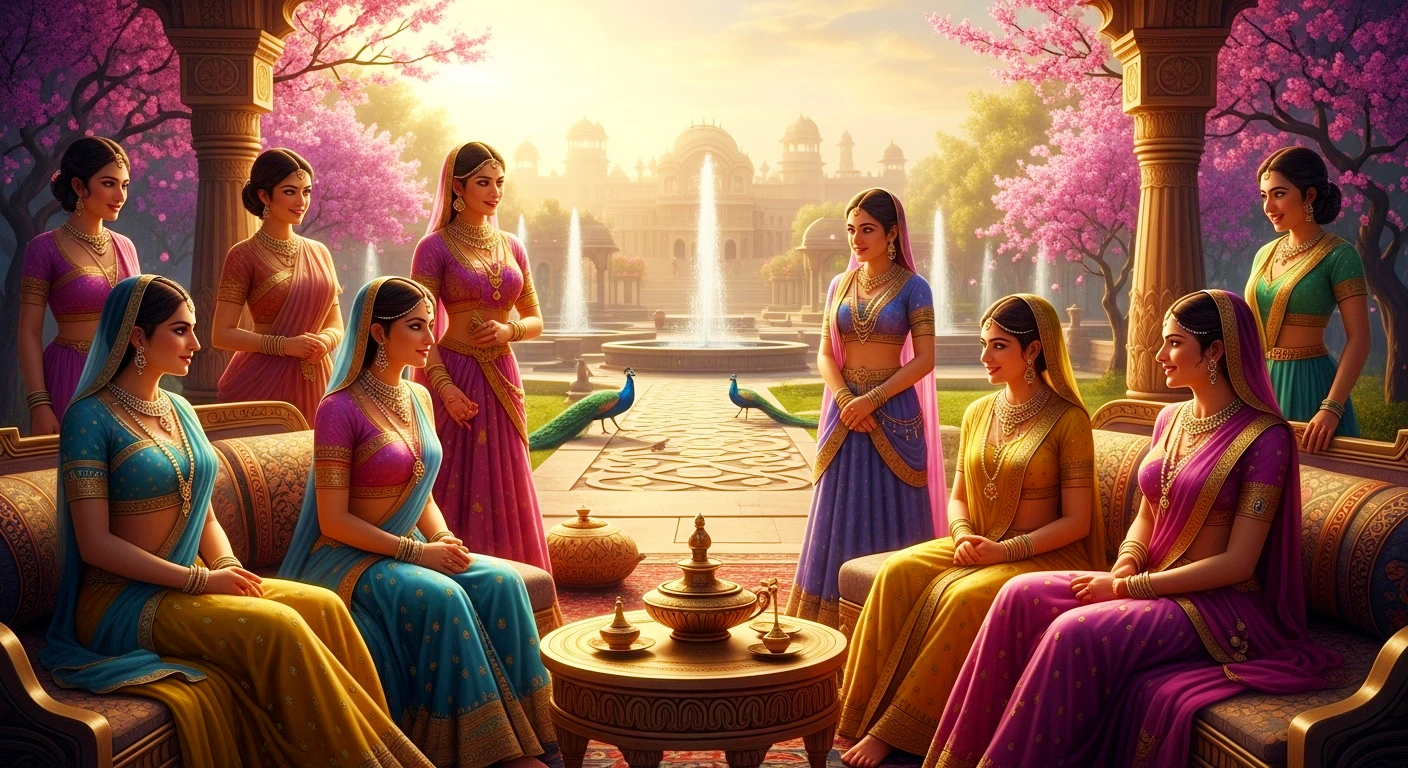
-
Save
Her Existence as Donor of A Monastic Complex
During the time of Buddha Koṇāgamaṇa, in the present world-cycle, she was reborn into a rich family in Bārāṇasī. Together with two other rich ladies by the name of Dhanañjānī and Sumedhā (her own name being unknown but may be referred to as Khemā), they built a monastic complex for the Sangha as a whole. At their death, they were reborn in the Tāvatiṃsa Deva realm, and after that existence, they were reborn in the human world and the deva-world, enjoying superior social status too.
Her Existence as The Eldest of The Seven Daughters of King Kikī
During the time of Buddha Kassapa, in the present world-cycle, King Kikī of Bārāṇasī, in the province of Kāsi, was an ardent supporter of the Buddha. He had seven daughters by the names of: (1) Princess Samaṇī, (2) Princess Samaṇaguttā, (3) Princess Bhikkhunī, (4) Princess Bhikkhadāyikā, (5) Princess Dhammā, (6) Princess Sudhammā and (7) Princess Saṃghadāyikā.
Later, during time of Buddha Gotama, they became respectively (1) Khemā Therī, (2) Uppalavaṇṇā Therī, (3) Paṭācārā Therī, (4) Mahāpajāpati Gotamī Therī, the foster mother of the Buddha,(5) Dhammadhinnā Therī, , (6) Mahā māyā Devi, the mother of our Supreme Buddha, and (7) Visākhā, donor of the great Pubbārāma Monastery.
The future Khemā Therī (Princess Samaṇī), on hearing a sermon by Buddha Kassapa, was very keen to become a bhikkhunī but her father would not give her permission to do so. So, as the eldest, together with her six younger sisters, they made a common resolve not to marry and remained spinsters throughout their lives which lasted twenty-thousand years. They supported Buddha Kassapa with the four bhikkhu requisites for life.
On one occasion, the Buddha made a marvellous discourse entitled Mahānidāna Sutta, (which is recorded as the second sutta in Mahāvagga of Dīgha Nikāya). Princess Samaṇī was so absorbed in hearing it that she learnt it by heart, and recited it often.
As the result of these good deeds, on her death, she became the Chief Queen (of Sakka) in the Tāvatiṃsa.
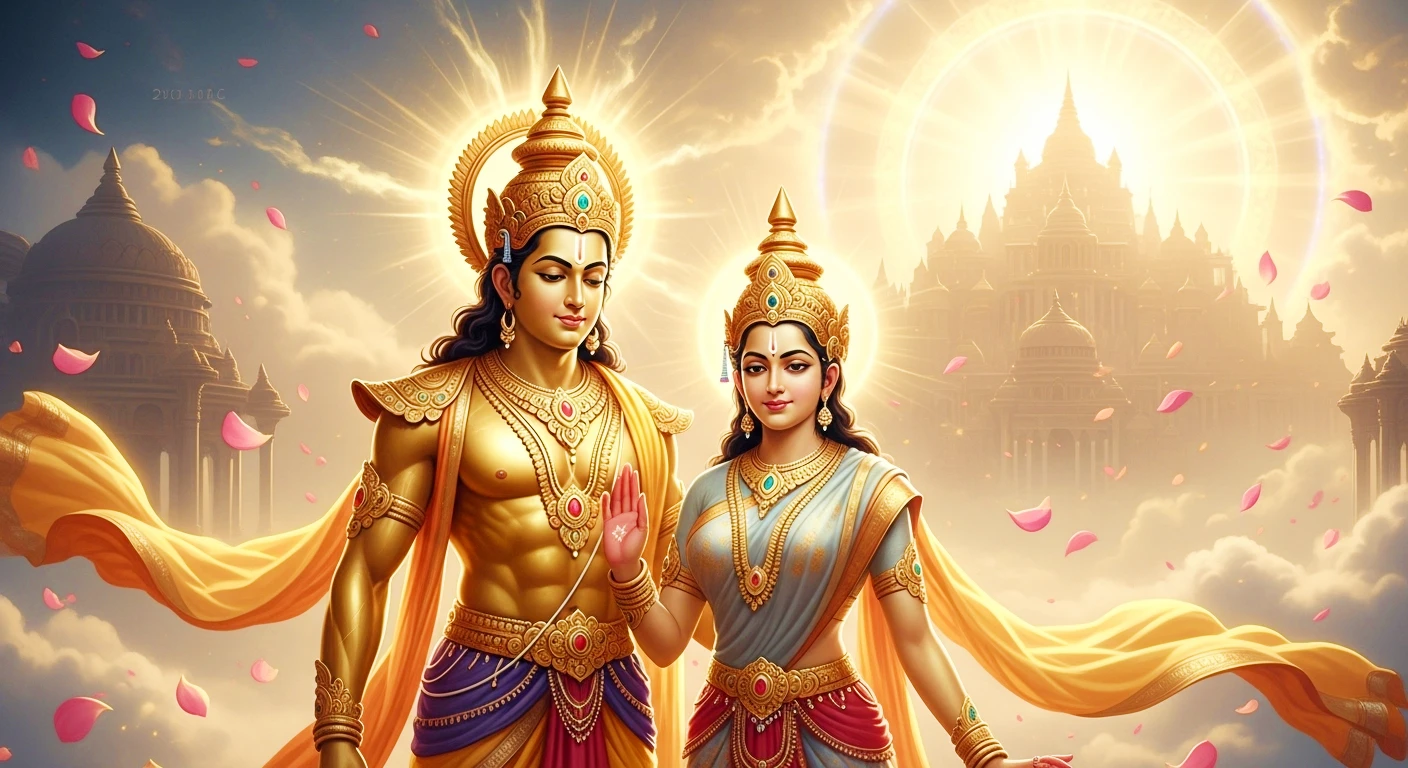
-
Save
Her Last Existence
During the time of Buddha Gotama, she was reborn in her last existence as the daughter of King Maddarāja of Sāgala. Since her birth brought peace to the land, she was named ‘Khemā’ (peace). When she came of age, she became the Queen of King Bimbisāra and was adored by her husband. She was conceited with her beauty.
The Buddha was then residing at the Veḷuvana monastery in Rājagaha. Queen Khemā had heard people saying that the Buddha always made discourses pointing out the faults of physical beauty, so she never went to see Him for fear that her beauty might condemn under His censure.
King Bimbisāra’s Clever Manoeuvre
King Bimbisāra thought: “While I am the most important and closest lay supporter (in Rajagaha) to the Buddha, it is inconceivable that my Queen has never visit the Buddha.” He contrived a plan by having a song composed by an able poet, in praise of the Veḷuvana monastery, which he ordered songsters to sing within earshot of the Queen.
A Four-stanza Eulogy on The Veluvana Monastery
(1) Anyone who is not fortunate enough to see the Veḷuvana monastery, the Bamboo grove residence of the Buddha, we consider him or her as one who has never seen the Nandavana Park of the celestial realm.
(2) He or she who has seen the Veḷuvana Grove, which is so much cherished by King Bimbisāra of Rājagaha, the people’s favourite ruler, the cynosure of the whole world, has truly seen the Nandavana Park, the favourite resort of Sakka, King of Devas.
(3) Many of the Tāvatiṃsa devas, having abandoned the Nandavana Park and descended to the earth (the southern Island Continent) and cast their eyes on the Veḷuvana Grove, are astonished and all their cares forgotten, they are never satisfied with seeing it.
(4) That Veḷuvana Grove has appeared due to the King’s past merit and is adorned by the Buddha’s majesty that poet could adequately describe its endless merits?
When Queen Khemā heard that song, although she had been to the Veḷuvana Grove on a pleasure visit with the King, her interest in the Grove was aroused afresh. She was very keen to visit it again. She asked the King’s permission to go there and went there with a big retinue. She chose the hour of the day that she presumed the Buddha was surely not there, (i.e. during the morning, when the Buddha usually went to the city for collecting alms-food).
She roamed about the Bamboo Grove which was full of all kinds of flowering trees, fruit trees, where bees and bumble bees busied themselves collecting honey, and where the koels sang and the peacocks preened their fathers in the quiet seclusion of the park. She also visited the monastic dwellings of the religiously inclined men, their meeting halls, rest-houses and walks.
She came across a youthful bhikkhu sitting in meditation at the foot of a tree and thought that young man should be enjoying the pleasures of life at present and take up the religious life only in his old age.
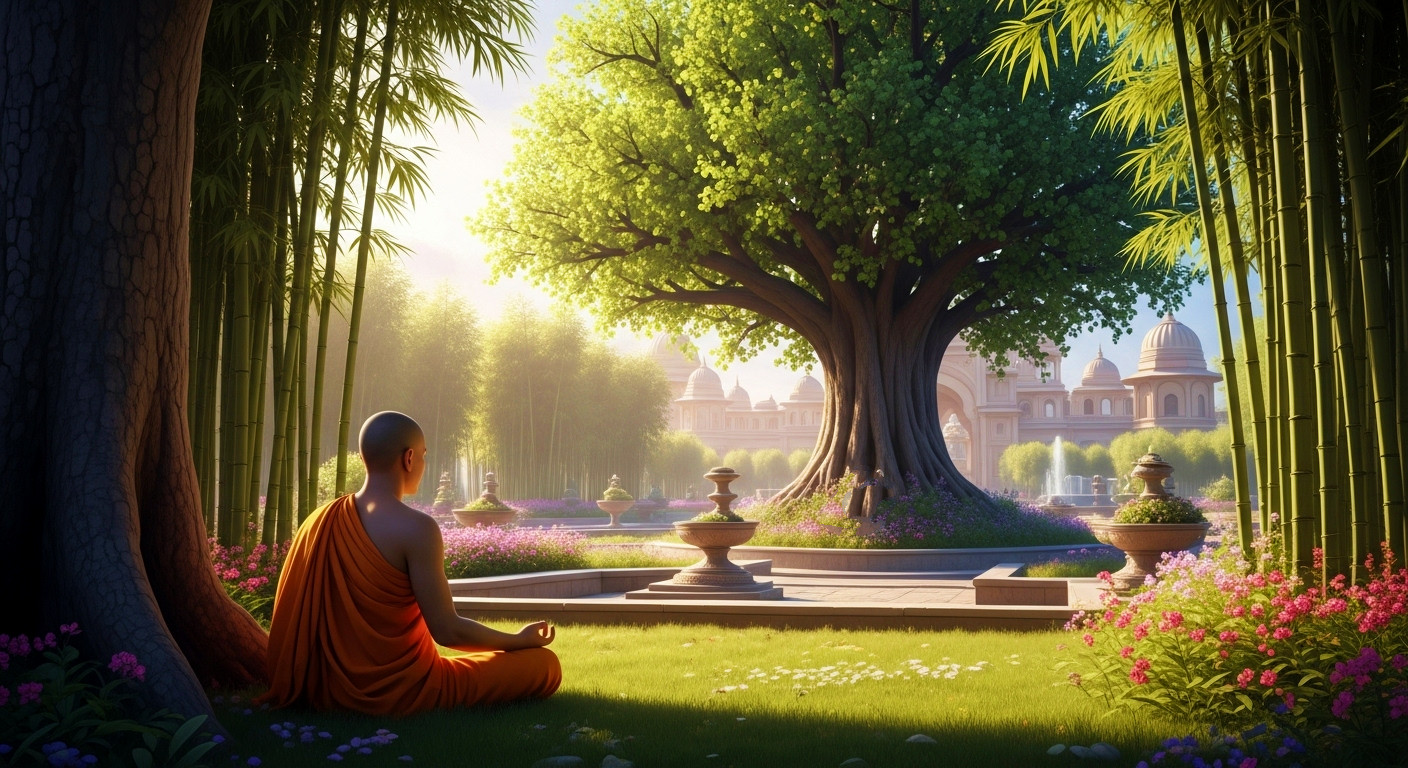
-
Save
Feeling sure that the Buddha was not in his private chamber, she went near it. Instead, the Buddha knew that she would come and He remained in His private chamber. He had created, by His powers, a young maiden whose beauty surpassed that of Queen Khemā and was fanning Him.
When Queen Khemā saw that lovely maiden, she abandoned attachment to her own good looks but become fascinated and enamoured of the strange beauty in front of her. But even as she was gazing at the girl, due to the Buddha’s powers, the beauty of the girl diminished perceptibly and within a few moments, she turned old and decrepit with wrinkled skin, gray hair, nursing teeth, black spots all over the skin, floppy breasts, bony joints protruding, veins twining about the body, bent double, and soon the old woman was trembling and breathing hard struggling for life and finally she gasped and collapsed. She was dead.
This vivid sight caused emotional religious awakening (saṃvega) in Queen Khemā. She realized thus:
“Oh, this form (body) is impure. It is indeed loathsome. Foolish women relish this impure, loathsome body.”
Then the Buddha spoke to Queen Khemā in these verses:
(1) “Khemā, look at the body that is afflicted with pain, impure, putrid, discharging impurities upwards and downwards, which foolish persons take so much delight in.
(2) “Cultivate the mind to get fixed on an object of meditation, so as to be able to perceive the loathsomeness of the body. Let you be mindful of the thirty-two aspects (constituent parts) of the body; let there be weariness about them.
(3) “(Khemā), just as the body of this woman by My side breaks up, so too will your body break up. Just as your body seem attractive for a while before death, so too the body of this woman by My side looked attractive before she died;(therefore) give up attachment to the body, both internally and externally.
(4) “Cultivate a perception of unsubstantiality and noting closely the rising and falling of phenomena. Give up the notion of a self, by doing so, you will quell the eleven fires burning in you and reach Nibbāna.
(5) “Just as the spider follows the web of its own making, so also sentient beings, who have attachment, follow the stream of defilements that are of their own making. The wise do not have any desire or regard for sense pleasures, but cut off the stream of defilements and go forth to Nibbāna.”
The Buddha knew that after listening to the discourse, the mind of Queen Khemā had become delighted and receptive, He continued with another discourse entitled Mahānidāna Sutta (which was the very sutta Queen Khemā had heard and learnt by heart from Buddha Kassapa in her previous existence as Princess Samaṇī). Queen Khemā remembered this Sutta and she attained Stream-Entry knowledge immediately.
After becoming an ariya as a Stream-Enterer, she wanted to make amends for her mistaken conceit about her beauty. She prostrated before the Buddha and submitted her apology in these five stanzas:
(1) “The all-knowing One, I pay homage to You.
The Embodiment of Compassion, I pay homage to You.
Buddha who has crossed over the flood of saṃsāra, I pay homage to you.
Giver of the Deathless, I pay homage to you!
(2) “I had been befuddled and led astray by attachment to sensuality, thus springing forward into the thicket of wrong view. By means of an appropriate device, you, the Bhagavā, have tamed me (who had been befuddled) and made me happy in being so tamed.
(3) “Lacking an opportunity of meeting such a great One as Yourself, who is endowed with morality, concentration, etc., sentient beings suffer enormous dukkha in the ocean of Saṃsāra.
(4) “Even though the Pure One, who has reached the Purity of Nibbāna, had been staying at the Veḷuvana monastery, I had failed to come and pay homage to the Lord of the three worlds. That failure, on my part, I (now) admit to the Bhagavā as my fault.
(5) “I had a mistaken idea about the Great Benefactor to the three worlds, the Bestower of the Ultimate Boon (magga, phala, Nibbāna) as one who is unprofitably censorious because I had been too fond of my beauty. My fault in having entertained such foolish thoughts and my failure to come and pay homage to you earlier, I (now) admit to the Bhagavā as my fault.
Upon admission by Queen Khemā of her previous fault, the Buddha said: “Let it be Khemā”, which cooled her heart as though ambrosial water were poured onto her person. Then Queen Khemā made obeisance to the Buddha and respectfully left Him.
Back at the royal palace, she saw King Bimbisāra and addressed him thus:
(1) “O great conqueror with golden complexion, you had employed a most apt strategy to persuade me to visit the Veḷuvana monastery. Marvellous indeed was your idea! For I had become keenly desirous of seeing the Veḷuvana Park, (with the consequence that) I have seen (with both my physical eye and the eye of wisdom) the Buddha, the great sage.
(2) “O King! If you would agree, I would take up bhikkhunīhood in the Teaching (which is replete with eight marvels) of the Buddha of unrivalled wisdom, of the embodiment of the highest virtues. Thanks to the wise words of the Buddha, I have gained insight into the tiresome nature of my body.”
On hearing the two stanzas spoken by Queen Khemā, King Bimbisāra, who had even, from her mien, been recognizable as an ariya, one who had attained Path-knowledge, raised his joined palm to his forehead and said to his Queen:
“My dear Queen, I allow you to become a bhikkhunī. May your renouncing the world come to its fulfilment (i.e. may you attain arahatship). (These words were spoken in half a stanza.) Thereupon the King put Queen Khemā on a golden Palanquin and sent her to the bhikkhunī ‘monastery’ in great state.
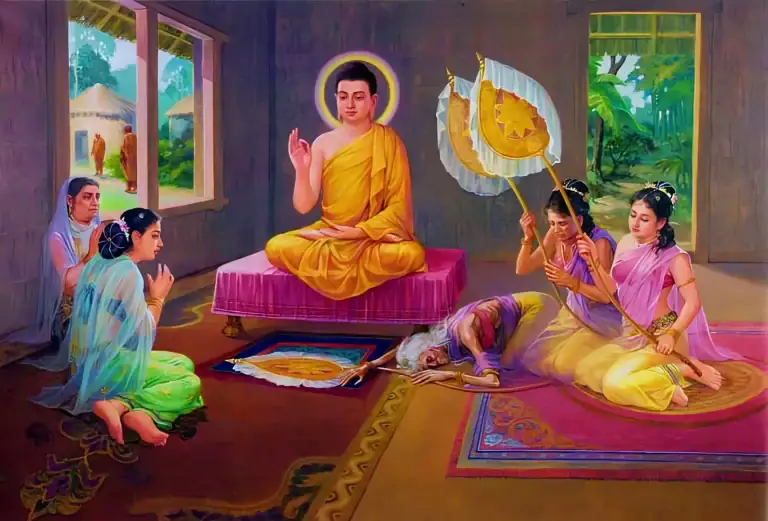
-
Save
Khemā Therī gained Arahatship
On the fifteenth day of her bhikkhunīhood, Khemā Therī, while observing the uposatha, contemplated on the lamp in front of her, how the flame arose and how it went out. A keen emotional religious awakening took place in her mind. Applying the insight into the nature of the rise and fall of the flame to all conditioned phenomena, i.e. the mind-body complex that constituted her present existence, she gained Arahatship together with the Four Discriminations and the Six Supernormal Powers.
******* (This account of Khemā Therī’s attainment of Arahatship is as described in the Khemā Therī Apādāna Pāli. The Commentary on the Aṅguttara Nikāya and the Commentary on the Dhamapada tell this event in a somewhat different manner. We have refrained from discussing them here lest it would confuse the reader.)
Khemā Therī was devoted both to the learning and the practice of the Doctrine and so she was most proficient in the Seven Stages of Purity, and was unrivalled in the exposition of the Ten Subjects of Discussion (kathāvatthu), most erudite in the application of the Abhidhamma method, outstanding both in learning and practice. The veracity of these statements may be gauged from Khemā Sutta, the first sutta in the Abyākata Saṃgutta of Saḷāyatana Saṃyutta.
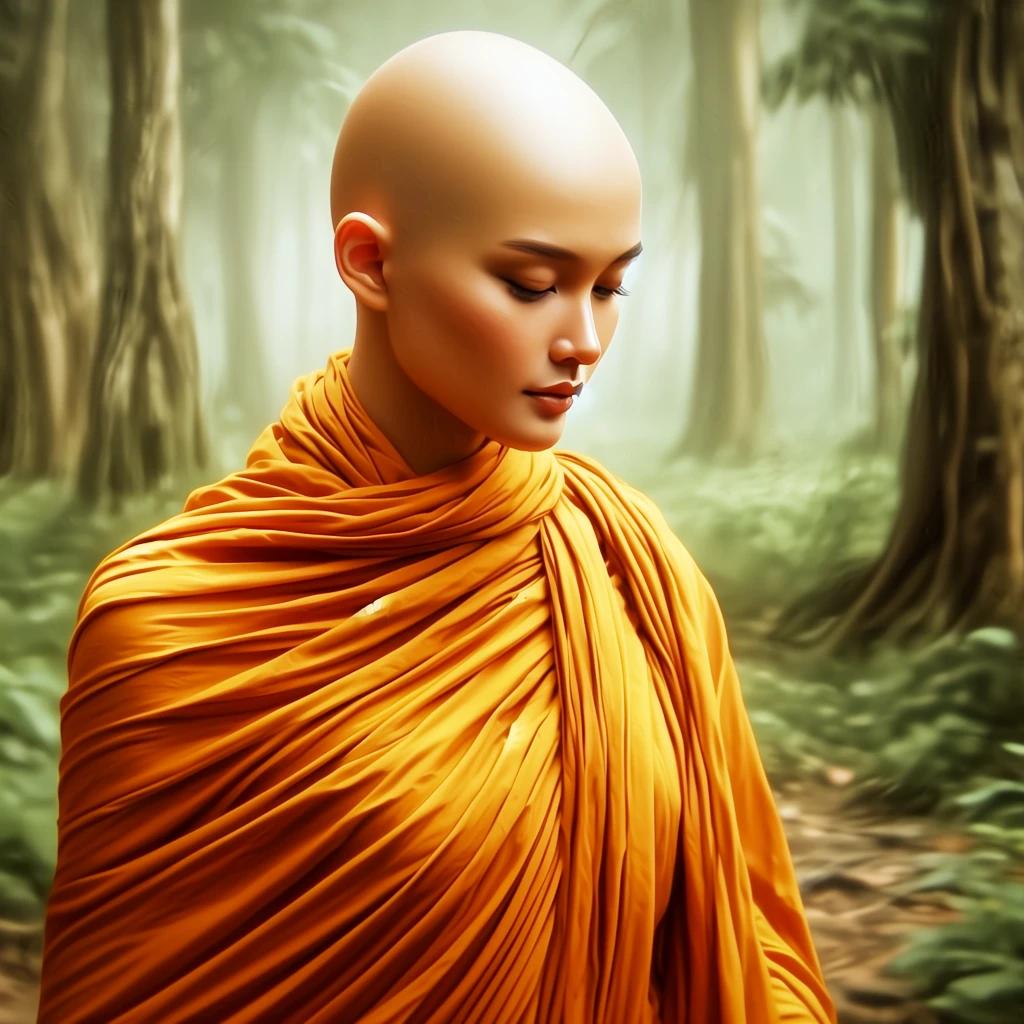
-
Save
Khemā Therī makes A Subtle Discourse to The Kosalan King
At one time, when the Buddha was staying at the Jetavana monastery in Sāvatthi, Khemā Therī was making a tour of the Kosalan country, and was sojourning at Toraṇa, which lay between Sāvatthi and Sāketa. At that time, King Pasenadi of Kosala was camping for the night at Toraṇa. Then the King said to a courtier:
“So, man, make inquires in this place which samaṇa or brāhmana is fit for my spiritual guide for today.”
The courtier made thorough inquires in Toraṇa but could find no samaṇa or brāhmana whom the King should go to for spiritual guidance. He only saw Khemā Therī who happened to be sojourning there. He went back to the King and said:
“There is no samaṇa or brāhmana in this place. But there is a bhikkhunī named Khemā Therī, a disciple of the Buddha. She is reported to be wise, skillful, learned, an expounder of the Doctrine in a fascinating way, endowed with a remarkable perspicacity. I would humbly suggest that your Majesty go to her for advice and guidance.” The King accepted the advice and went to Khemā Therī.
He made obeisance to her and sitting in a suitable place, addressed Khemā Therī thus:
“Venerable, does a sentient being exist after death?”
“Great King,” replied Khemā Therī, “the Buddha does not say that a sentient being exists after death.”
“If so, Venerable, does a sentient being not exist after death?”
“Great King, the Buddha does not say that a sentient being does not exist after death.”
“Venerable, does a sentient being exist as well as does not exist after death?” “Great King, the Buddha does not say that a sentient being exist as well as does not exist after death.”
“If so, Venerable, does a sentient being not exist after death?”
“Great King, the Buddha does not say that a sentient being neither exists nor does not exist after death.”
The King was at his wit’s end. He further put questions which were replied as follows:
“Venerable, (1) When I asked: ‘Does a sentient being exist after death?’ you replied: ‘’Great King, the Buddha does not say that a sentient being exists after death!’ (2) When I asked: ‘If so, Venerable, does a sentient being not exist after death?’ you replied: ‘Great King, the Buddha does not say that a sentient being does not exist after death.’ (3) When I asked: ‘Venerable, does a sentient being exist as well as does not exist after death?’ you replied: ‘Great King, the Buddha does not say that a sentient being exists as well as does not exist after death.’ (4) When I asked: ‘If so, Venerable, does a sentient being neither exists nor does not exist after death?’ you replied: ‘Great King, the Buddha does not say that a sentient being neither exists nor does not exist after death.’ Now, Venerable, why does the Buddha not say anything regarding these four questions? What is the reason for the Buddha’s refusal to answer these four questions?”
Khemā Therī then said:
“Great King, in that case, let me put you a question. You may answer it as you wish. What do you think of what I am going to say now? Do you have within your dominion any man who can practically count things or an arithmetician who can say: ‘There are such and such number of grains of sand in the Gaṅgā river?’ Or who can say: ‘There are so many hundreds, so many thousands, so many hundred thousand grains of sand in the Gaṅgā river?’ ”
“No, Venerable, there is none.”
“Great King, do you have any man who can practically count things or an arithmetician who can say: ‘There are so many vessels or bowls of water in the great ocean.’ Or who can say: ‘There are so many hundred, so many thousands, so many hundred thousands of bowls of water in the great ocean?’ ”
“No, Venerable, This is because the great ocean is too deep, beyond measure, incomprehensible.”
“Even so, Great King. The Buddha has given up materiality (corporeality) which may be referred to as sentient being; he has eradicated it completely. He has made it like an uprooted palm tree, has rendered it incapable of coming into being again, and has made it impossible to arise in the future.
“The Buddha, who is liberated from being called the aggregate of corporeality or the phenomenon of materiality, is endowed with attributes and disposition or intention which are as great as the great ocean, beyond measure, incomprehensible. As for the Buddha, the statement, ‘a sentient being exists after death’ is irrelevant statement, ‘a sentient being does not exist after death’ is equally irrelevant; the statement, ‘a sentient being exists as well as does not exist after death’ is equally irrelevant;the statement, ‘a sentient being neither exists nor does not exist after death’ is equally irrelevant.”
(It is not proper for the Buddha to say that a sentient being exists after death; or a sentient being does not exist after death; or that a sentient being exists as well as does not exist after death, or that a sentient being neither exists nor does not exist after death. This is a very profound matter.)
“The Buddha has given up Sensation…. (p)….Perception… (p)…Volitional activities… (p)…Consciousness, which may be referred to as a sentient being; has eradicated it completely, has made it like a palm tree stump, has rendered it incapable of coming into being again, and has made it impossible to arise in the future.
“The Buddha who is liberated from being called the aggregate of Consciousness or the phenomenon of Consciousness is endowed with attributes and disposition or intention which are as great as the great ocean, beyond measure, incomprehensible. As for the Buddha the statement, ‘a sentient being exists after death’ is irrelevant statement, ‘a sentient being does not exist after death’ is equally irrelevant; the statement, ‘a sentient being exists as well as does not exist after death’ is equally irrelevant; the statement, ‘a sentient being neither exists nor does not exist after death’ is equally irrelevant.”
(That was the discussion that took place between the Kosalan King and Khemā Therī for the second round. Explanations on this will be given later.)
King Pasenadi of Kosala was delighted with the words of Khemā Therī. He made obeisance to her and respectfully departed.
Later on, the King visited the Buddha and put the same questions as he did to Khemā Therī. The Buddha answered them just as Khemā Therī did, (These questions and answers may be gleaned from the text.)
When the King found that the Buddha’s answers and those of Khemā Therī were exactly the same, down to the letter, he was greatly astonished and exclaimed:
“Marvellous it is, Venerable Sir! Astounding it is! The Buddha’s exposition is exactly the same as that of His disciple, both in meaning and in words. They are in full agreement without any discrepancy. Venerable Sir, I had once put these questions to Khemā Therī and she had answered to me in exactly the same way, both in essence and in words.
Marvellous it is, Venerable Sir! Astounding it is! The Buddha’s exposition is exactly the same with that of His disciple, both in meaning and in words. They are in full agreement without any discrepancy.”
Then he begged leave of the Buddha. He was greatly delighted with the Buddha’s answers. He rose, made obeisance to the Buddha and respectfully departed.
(This is a gist of Khemā Sutta.)
******************************************************
Explanation:
Why did the Buddha not give any reply to the questions which are so framed: ‘that a sentient being exists after death’; ‘that a sentient being does not exist after death’; ‘that a sentient being exists as well as does not exist after death’; ‘that a sentient being neither exists nor does not exist after death’?
(1) There is, in truth and reality, nothing in the sentient world other than the five aggregates. There is nothing, in the ultimate sense, such a thing as a sentient being. Therefore, whether a ‘sentient being’ exist or not is not for the Buddha to say. (Abyākata Saṃyutta; the third sutta therein).
(2) Only to one, who does not understand the nature of the five aggregates according to the Four Ariya Truths, there arises the problem of a sentient being and its existence or non-existence, in the said four questions, which occur to him due to Wrong View. To one who understands the Four Ariya Truths, there is no Wrong View that gives rise to these four questions. Since the Buddha has the most complete understanding of the Four Ariya Truths, there do not arise in Him these four questions. That is why He does not say anything about them. (Abyākata Saṃyutta; the fourth sutta.)
(3) Such questions, based on wrong view, arise only in one who has not rid of attachment, or craving for the five aggregates. To one who has no craving for the five aggregates, they do not occur. The Buddha, who has rid of Craving for the five aggregates together with any trace of acquired habit, does not have these wrong concepts. Therefore, He remained silent when these questions were asked. (Abyākata Saṃyutta; the fifth sutta). (In the sixth sutta of the same Saṃyutta the four questions are dealt with adequately.)
In Khemā Sutta, Khemā Therī’s answer was somewhat different; it had the undercurrent of reference to the Buddha. This was because she knew that the questioner (Kosalan King) had the Buddha also in mind when asking the four questions. So, Khemā Therī’s answer in essence was:
The Buddha had (by getting rid of the cause of the five aggregates) rid of the five aggregates so that what was usually called a ‘sentient being’ was not coming into being after his death. He was freed from a future set of five aggregates, therefore, there was nothing that might be referred to as a being or a person. Since the Buddha knew this, a ‘sentient being’ after ‘death was irrelevant for Him to speak of’. Therefore, He remained silent about the four questions.
One might argue thus: since the Buddha would not acquire a fresh set of the five aggregates, it is understandable that He refused to answer the first question, i.e. ‘Does sentient being exist after death?’ But why did He refuse to answer the second question: ‘Does a sentient being not exit after death?’ Should He say: ‘No, it does not’? He refused to answer this question too because a ‘sentient being’ is not a real thing in the ultimate sense. (This is the explanation given in the Sub-Commentary.) Khemā Therī Sutta is profound in Dhamma. It is a matter for further inquiring for the virtuous.
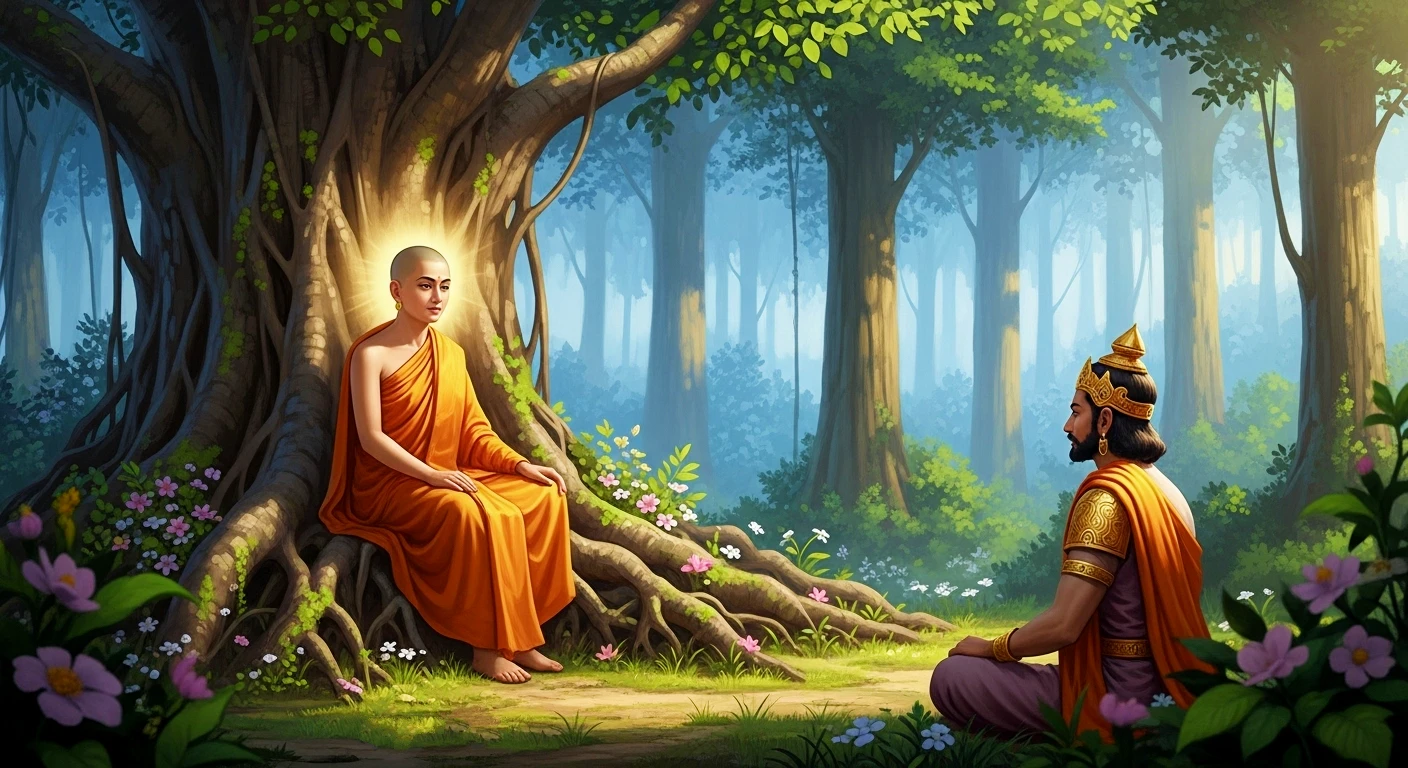
-
Save
Abyākata Saṃyutta;
The discourse to the Kosalan King at Toraṇa was the immediate cause of Khemā Therī’s being designated by the Buddha as the foremost bhikkhunī in the possession of profound Knowledge.
On one occasion, when the Buddha was residing at the Jetavana monastery, in a bhikkhu congregation, while naming outstanding bhikkhunīs as foremost in their own areas (of proficiency), He declared:
“Bhikkhus, among My bhikkhunī-disciples who have profound Knowledge, Khemā Therī is the foremost (etadagga).”
This declaration accorded her by the Buddha also had been happily recorded by Khemā Therī herself in the following stanzas, in her own life history:
(1) “After I had become a bhikkhunī, I had explained to King Pasenadi of Kosala in accordance with the Doctrine on the profound questions he put to me at a place called Torana (which was between Sāvatthi and Sāketa.)
(2) “Later the King approached and put these same questions to the Buddha, and He answered these propound questions exactly as I had answered.
(3) “The Conqueror of the five māras, the Supreme One among all men, being satisfied with my excellence in expounding the Dhamma, has designated me as the foremost bhikkhunī among the eminently wise.”
The Verses of Arahant Nun Khemā
1). [Māra:] Dear Khemā, you are still young and beautiful. I am also young and in my prime. Come, let us enjoy sensual pleasures and delight in sweet music.
2). [Nun Khemā:] Hey Māra, I am disgusted and ashamed of this foul body that is subject to disease and destruction. I have rooted out craving for sensual pleasures.
3). Sensual pleasures are like swords smeared with poison. The five aggregates of clinging are like piles of flesh. What you call delight in sensual pleasures is now non-delight for me.
4). I have gotten rid of craving for everything. I tore apart the dark mass of ignorance. That is how you should understand me. Māra, in this case you are defeated.
5). Not knowing reality, foolish people revere superstitions and worship the fire in the forest searching for purity.
6). But I worship the Supremely Enlightened Buddha, the best of men. Following the great teacher’s instruction, I have been completely released from all suffering.
(From the Book: The Great Chronicle of Buddhas | by Ven. Mingun Sayadaw
